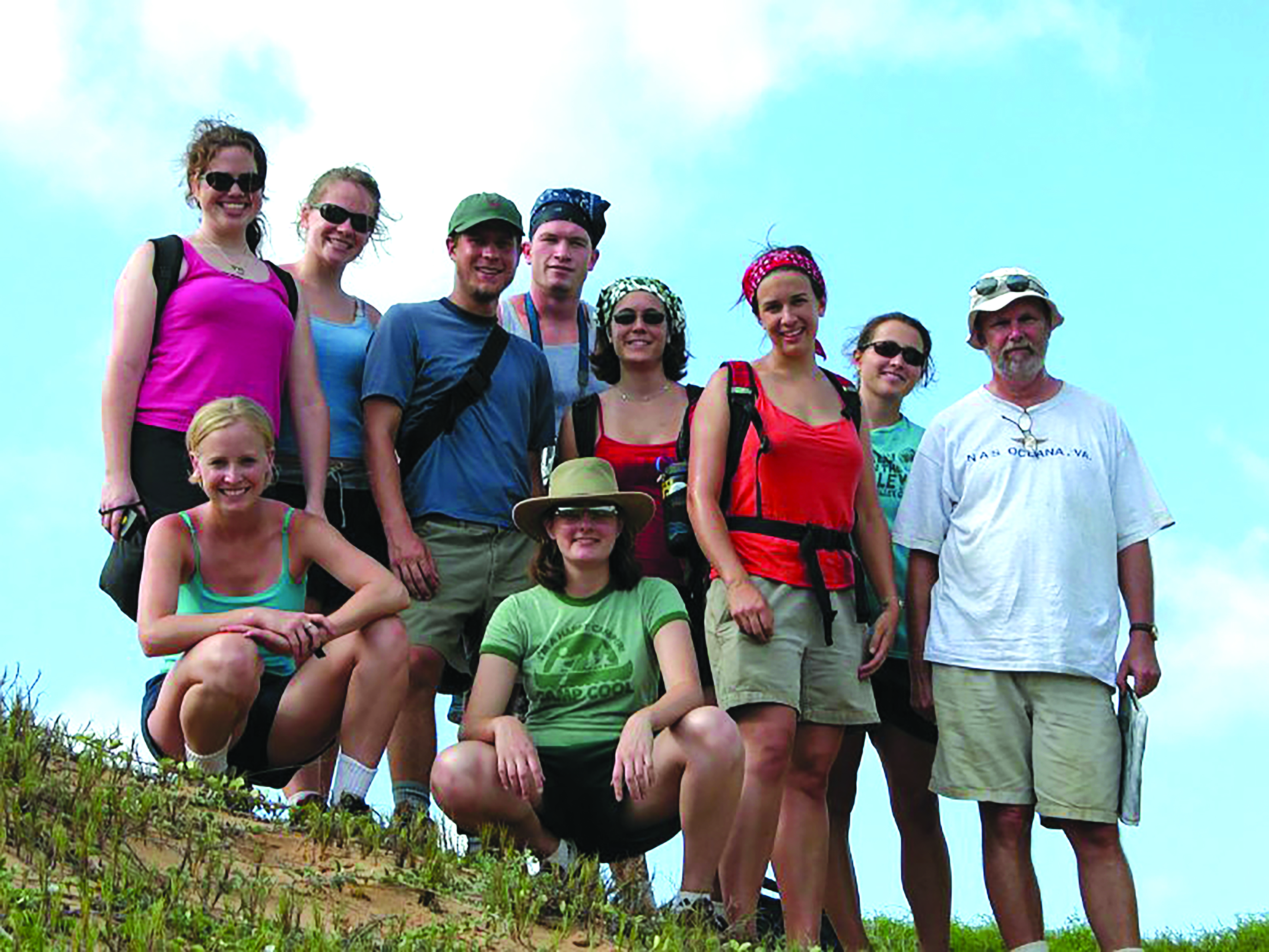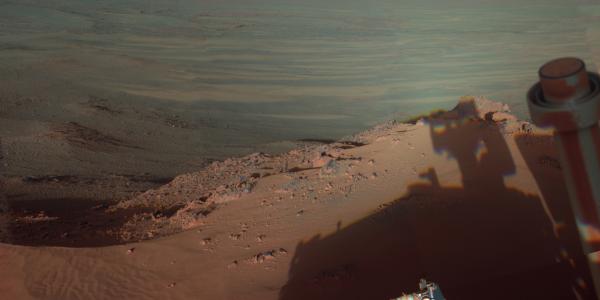After 48 years in Arts & Sciences, Ray Arvidson is retiring this year.

Raymond E. Arvidson, the James S. McDonnell Distinguished University Professor, grew up watching the United States race the Soviet Union to the moon. When Neil Armstrong took his “one small step” in the summer of 1969, a newly married Arvidson was days away from moving to Providence, Rhode Island, to attend Brown University as a graduate student in planetary science.
Arvidson’s early impressions of space exploration set the stage for his distinguished career, which has spanned nearly 50 years; encompassed numerous NASA missions, including almost every mission to Mars since the mid-1970s; and impacted countless students, many of whom are now themselves leaders in the field of planetary science.
After earning his doctorate in 1974, Arvidson joined Washington University’s Department of Earth and Planetary Sciences as an assistant professor. 1975 proved to be a pivotal year for space research at WashU. With the support of then-chancellor William Danforth, aerospace innovator James S. McDonnell established the McDonnell Center for the Space Sciences. NASA’s space program was also in its early days, with some of its most awe-inspiring missions slated for launch in the coming years. Arvidson was there from the beginning, truly in the right place at the right time.
“I was lucky to get involved in NASA’s planetary exploration program, just as it was being born,” Arvidson recalled. “I got to see the whole NASA solar system exploration program blossom, starting as a science team member for the Viking lander mission with Carl Sagan in 1976.” Following that experience, Arvidson went on to work on the Magellan mission to Venus and many missions to the red planet, including the Mars Global Surveyor, 2001 Mars Odyssey mission, Mars Exploration Rovers mission (Spirit and Opportunity), 2005 Mars Reconnaissance Orbiter, Mars Phoenix Scout mission, and Mars Science Laboratory Curiosity Rover mission.
“As an advisor I focused on just taking the time and care to understand what students’ frustrations and concerns might have been, and not directing them.”
“My job has been helping define the juicy places to explore on Mars using orbital data, and also making sure we can drive the rovers from A to B without getting stuck,” Arvidson said. This work (and a lucky introduction by his wife, Eloise) eventually led Arvidson to dinner with Neil Armstrong – a chance to discuss rover routes and planetary surfaces with one of the few people to have set foot on extraterrestrial terrain.

In addition to his efforts in planetary science research, which helped put WashU on the forefront of the field, Arvidson has also devoted considerable energy to teaching and outreach. Arvidson was the director of WashU’s Environmental Studies Program from 2001–04 and chair of the Department of Earth and Planetary Sciences from 1991–2008. To meet the needs of students seeking more field research opportunities, he designed and led the Pathfinder Program for outstanding undergraduates, which has taken Arvidson and his students to exotic locales from Hawaii to the Spanish Rio Tinto to the Mojave Desert.
“I always wound up with a group of students who were academically absolutely outstanding,” Arvidson said. “My 400 or so Pathfinder students have gone off in all sorts of directions – professors, physicians, lawyers, CEOs, government scientists, and even one Native American chief.”
“As an advisor I focused on just taking the time and care to understand what students’ frustrations and concerns might have been, and not directing them, but just being there to counsel them,” Arvidson added. “If they wanted to go in a particular direction, we talked it through – so they could go where they wanted to go. And it seems to have worked!”
After his official retirement this summer, Arvidson plans to continue his involvement with NASA’s Mars Science Laboratory’s Curiosity rover, as well as his work with the Planetary Data System (PDS), which now spans eight nodes, including the geosciences node housed at WashU that Arvidson has managed since 1989. Beyond his projects with NASA, Arvidson will also continue as resident astronomer for Viking Ocean Cruises.
“A few years ago, I realized that I’m just a little bit too long in the tooth to continue doing Pathfinder trips and new NASA missions,” Arvidson said. He opted to review the Perseverance mission and help select the scientists instead of joining the team himself. He also turned the Pathfinder program over to a new group of leaders in environmental studies. But that doesn’t mean students and colleagues won’t still spot Arvidson around campus. “If you know me, you know I won’t be able to stay away. Plus, Eloise needs me out of the house.”
Share notes of thanks and favorite memories with Ray. Join us for a celebration of Arvidson's career in September 2022.




